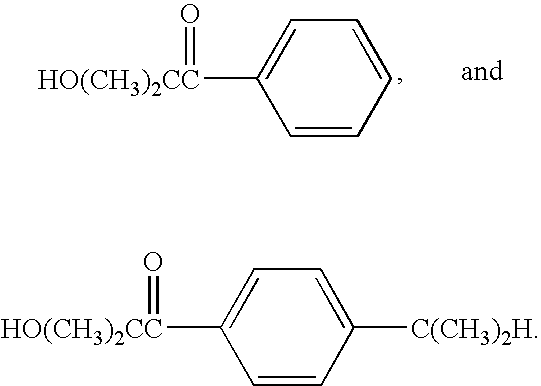Method of preparing a metal-silicone rubber composite
a metal-silicone rubber and composite technology, applied in the direction of dielectric characteristics, vacuum evaporation coating, coatings, etc., can solve the problems of unsuitable methods for silicone elastomers, formation of cracks and/or wrinkles in the transferred metal layer, and unsuitable conditions for heat or pressure sensitive silicone elastomers. , to achieve the effect of reducing cracking and wrinkles, easy availability of silicone compositions, and high throughput manufacturing process
- Summary
- Abstract
- Description
- Claims
- Application Information
AI Technical Summary
Benefits of technology
Problems solved by technology
Method used
Image
Examples
example 1
[0078] A glass mold was treated with Novec™ EGC-1700 and air-dried. Gold (100 nm) was deposited on the glass mold and then 200 nm of aluminum was deposited on the gold, each metal deposited by thermal evaporation. The mold was filled with a curable silicone composition consisting of 95.2% of a dimethylvinylsiloxy-terminated organpolysiloxane consisting essentially of 70 mol % of PhMeSiO2 / 2 units, 27 mol % of Me2SiO2 / 2 units, and 3 mol % of Me2ViSiO1 / 2 units, wherein the organopolysiloxane has a number-average molecular weight of 6,161 and a weight-average molecular weight of 11,320; 3.9% of a mercapto-functional organic compound having the formula CH3CH2C(CH2CO2CH2-CH2SH)3; and 0.9% of Darocur 4265. The silicone composition was cured under nitrogen at 4° C. for 10 min using a portable UV lamp (Spectroline® EN-160L) having a wavelength of 365 nm. The silicone rubber was removed from the mold with transfer of the metal layers from the glass mold to the rubber. The gold layer in the me...
example 2
[0079] A glass mold was treated with Novec™ EGC-1700 and air-dried. Gold (200 nm) was deposited on the glass mold and then 100 nm of aluminum was deposited on the gold, each metal deposited by thermal evaporation. The mold was filled with a curable silicone composition consisting of 75% of the silicone composition of Example 1 and 25% of 4-n-pentyl-4′-cyanobiphenyl (H.W. Sand Corporation). The silicone composition was cured under nitrogen at 4° C. for 10 min using a portable UV lamp (Spectroline® EN-160L) having a wavelength of 365 nm. The silicone rubber was removed from the mold with transfer of the metal layers from the glass mold to the rubber. The gold layer in the metal-silicone composite was highly reflective and free of cracks and wrinkles, as determined by visual inspection (unaided eye). The gold layer also exhibited high electrical conductivity.
PUM
| Property | Measurement | Unit |
|---|---|---|
| Fraction | aaaaa | aaaaa |
| Thickness | aaaaa | aaaaa |
| Thickness | aaaaa | aaaaa |
Abstract
Description
Claims
Application Information
 Login to View More
Login to View More - R&D
- Intellectual Property
- Life Sciences
- Materials
- Tech Scout
- Unparalleled Data Quality
- Higher Quality Content
- 60% Fewer Hallucinations
Browse by: Latest US Patents, China's latest patents, Technical Efficacy Thesaurus, Application Domain, Technology Topic, Popular Technical Reports.
© 2025 PatSnap. All rights reserved.Legal|Privacy policy|Modern Slavery Act Transparency Statement|Sitemap|About US| Contact US: help@patsnap.com



